IGF DES overview
IGF DES (Insulin-like Growth Factor-1 Des (1-3)) peptide is a modified version of insulin-like growth factor-1 (IGF-1). It is generated by enzymatic cleavage of the IGF-1 protein and contains a deletion of the amino acids at positions 1-3. This modification results in a peptide with a shorter half-life and more localized actions in the body.
It is known to stimulate the growth and proliferation of cells, particularly muscle cells. It is also believed to play a role in bone growth, tissue repair, and insulin sensitivity. Due to its anabolic properties, IGF DES has been used in bodybuilding and athletic communities as a performance-enhancing drug to promote muscle growth and recovery.
Overall, IGF DES peptide is a potent growth factor that has potential therapeutic uses in muscle-wasting diseases and tissue regeneration, but its use as a performance-enhancing drug is highly discouraged due to the risk of adverse effects.
IGF DES Application
IGF DES is a modified form of insulin-like growth factor-1 (IGF-1), a naturally occurring hormone involved in growth and development. It is specifically modified by removing the first three amino acids from the N-terminus of IGF-1. Here are some of the potential applications and uses of IGF DES:
1.Muscle Growth and Hypertrophy: It has been studied for its potential to promote muscle growth and hypertrophy. It has shown an ability to stimulate protein synthesis and enhance the proliferation of muscle cells. This makes it a potential candidate for muscle-building and performance-enhancing purposes.
2.Tissue Repair and Regeneration: It has been investigated for its role in tissue repair and regeneration. It has been shown to promote the proliferation and differentiation of various cell types involved in tissue repair, including muscle cells, bone cells, and skin cells. This suggests potential applications in the treatment of injuries, wound healing, and tissue engineering.
3.Insulin Sensitivity and Glucose Regulation: It has demonstrated the ability to improve insulin sensitivity and glucose regulation. It can enhance glucose uptake in cells and promote glycogen synthesis, potentially making it useful for conditions such as insulin resistance and type 2 diabetes.
4.Neuroprotection: It has shown neuroprotective effects in various studies. It can support the survival and growth of neurons, and it may have potential applications in the treatment of neurodegenerative diseases or neurological injuries.
What is the difference between IGF DES and IGF LR3?
IGF DES and IGF LR3 are both modified versions of insulin-like growth factor-1 (IGF-1), but they differ in their structural modifications and properties. Here are the main differences between IGF DES and IGF LR3:
1.Amino Acid Modification: The primary difference between IGF DES and IGF LR3 lies in the specific modifications made to the IGF-1 molecule. IGF DES is modified by removing the first three amino acids (des(1-3)) from the N-terminus of IGF-1, resulting in a shortened form. On the other hand, IGF LR3 has an additional sequence of 13 amino acids at the N-terminus, called the Long R3, which is a synthetic extension that increases its half-life.
2.Half-Life and Duration of Action: The modifications in IGF DES and IGF LR3 impact their pharmacokinetics. IGF LR3 has a longer half-life compared to IGF DES, which means it remains active in the body for a longer duration. This extended half-life of IGF LR3 allows for sustained effects and a potentially longer window of action.
3.Binding Affinity: IGF LR3 has a reduced binding affinity for insulin-like growth factor-binding proteins (IGFBPs) compared to IGF DES. This reduced affinity allows IGF LR3 to circulate in the bloodstream for longer periods without being bound and inactivated by IGFBPs. In contrast, IGF DES has a higher binding affinity for IGFBPs, which may affect its availability and activity.
4.Biological Effects: While both IGF DES and IGF LR3 are capable of stimulating muscle growth and promoting protein synthesis, their potency and specific effects may differ. IGF LR3 is generally considered to be more potent and exhibits a higher degree of anabolic activity compared to IGF DES. IGF LR3 may have a more pronounced effect on muscle hypertrophy and can lead to greater increases in muscle mass.
How to buy?
Usually we have regular stock products, if you are interested in the product, please contact us for the latest stock list.
We have very safe special transportation line, IGF DES Peptide products can be sold to Europe, USA,Canada, Australia and so on.
Our payment method is Bitcoin USDT and BankAccount.








 Miracle Retatrutide: 24.2% weight loss after 48 weeks, expected to reverse fatty liver disease
Miracle Retatrutide: 24.2% weight loss after 48 weeks, expected to reverse fatty liver disease HCG peptide
HCG peptide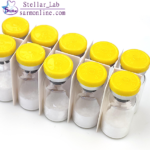 Tirzepatide peptide
Tirzepatide peptide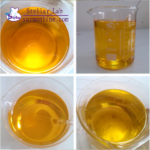 Tri Tren 180 liquid steroids
Tri Tren 180 liquid steroids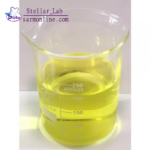 Test Blend 500 liquid steroids
Test Blend 500 liquid steroids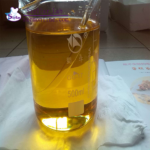 Test 400 liquid steroids
Test 400 liquid steroids BPC-157peptide
BPC-157peptide TB500 Peptide
TB500 Peptide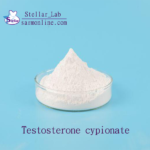 Testosterone cypionate/Depo-Testosterone
Testosterone cypionate/Depo-Testosterone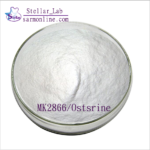 Ostarine MK2866
Ostarine MK2866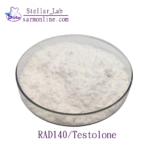 Testolone RAD140
Testolone RAD140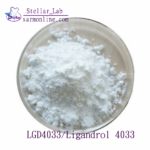 Ligandrol LGD4033
Ligandrol LGD4033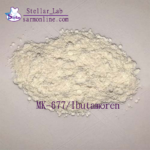 Ibutamoren MK677
Ibutamoren MK677 Thymalin
Thymalin KissPeptin 10
KissPeptin 10 Hexarelin
Hexarelin